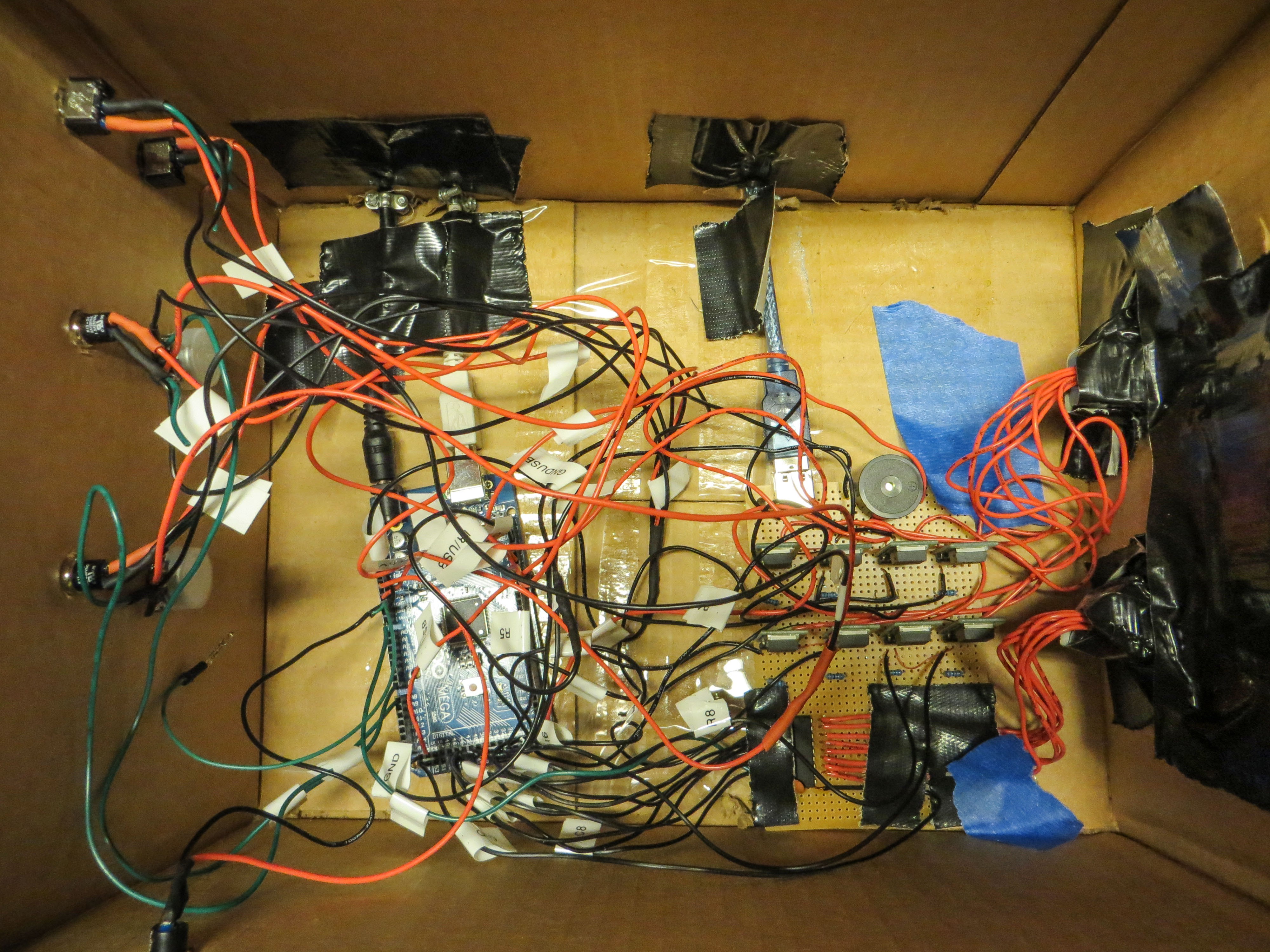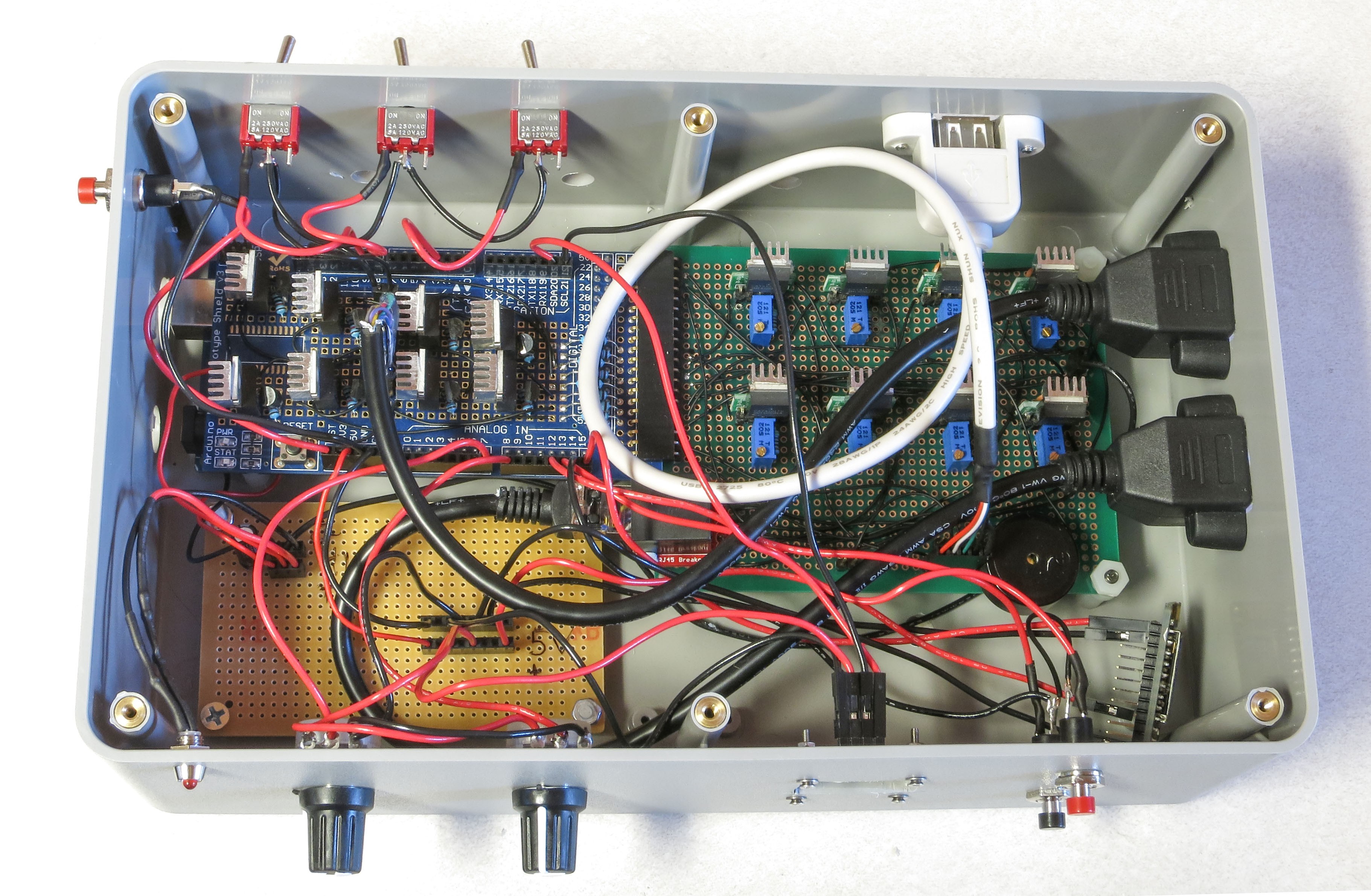-
Licenses
10/10/2016 at 05:52 • 0 commentsNow that I'm finishing the first phase of documentation for this project, I think I need to specify the exact licenses I'm using for the project. I state CERN Open Hardware and Creative Commons, but there are multiple variants of these. So for clarification:
Hardware is under the CERN Open Hardware License v. 1.2; more info here.
Instructions/logs are under Creative Commons Attribution-ShareAlike 4.0 International; more info here.
Software is released under GPL v. 2.0; more info here.
-
Plans For The Long Run
10/10/2016 at 04:43 • 0 commentsAfter a lot of work over the past week, I've got the fundamental instructions for building and operating an RTI dome system. done and posted There's a few sections that I'd like to add (more on this shortly). But in the long run, there are a few things I'd like to do with the system, both to make it easier to assemble and also to add extra capabilities. In the unlikely event that I win a residency at the SupplyFrame Design Lab, these would be first on my list. More likely, I'll have to find the spare time to work on some of them at some unspecified time in the future.
- Design a PCB board. Man, this would make assembly so much easier, cut down significantly on the part count, and reduce the possibility of error.
- Enclosures. With a PCB board designed, I could also design laser-cut and/or 3D-printed enclosures it could fit in. That would cut down quite a bit on assembly time.
- Extra outputs. A PCB board would free up enough space to add more CAT4101 output channels. These could double the maximum LED count from 64 to 128. Alternatively, they could double the output current from 1 to 2 amps for 64 LEDs, which would be great for larger domes. Cree does make LEDs that can handle that current.
- A mega-dome. The current design has enough output power to drive a dome at least a meter in diameter, and possibly a bit larger. The optimum artifact size for a dome, though, is roughly the radius, so that's a half-meter for a meter dome. There are many objects that could benefit from a larger dome size, like paintings and fossils. I have an idea for a simple addition to the current control electronics that could drive a "mega-dome", with a diameter of up to 4-5 meters capable of imaging objects up to 2.5 meters in size.
- Multi-spectral. People have reported useful results with RTI in the IR and UV spectral ranges, so I'd like to try that.
- Super-automated. In principle, you could build a fully-computerized system that could photograph and process objects without human intervention. Robot arms to place objects, software to automatically process photo datasets when they're done. We have the technology ...
-
The View From A Height
10/10/2016 at 04:31 • 0 commentsJust finished my Hackaday Prize 2016 video:
Unfortunately, there was a lot of stuff that I wanted to include, but 5 minutes was just not enough time. One piece of video I shot was to prove that the system was battery-operated, since there weren't any electrical outlets in sight. Couldn't fit it into the Prize video, but I can put it here:
-
Using RTI On Shiny Objects
10/05/2016 at 17:24 • 0 commentsTaking a good photograph of a shiny metal object can be problematic because of light reflections creating highlights off the surface. Here's a picture of the back of a pocket watch used by John Wesley Powell during his trailblazing boat trips through the Grand Canyon (1869-1872); the shiny gold surface results in major problems with highlights (click on the photos for a full-scale view).
![]() By fitting a light curve to every pixel, RTI essentially "smooths out" high points in the light curve, eliminating reflected highlights. Here's an RTI image, slightly modified using Photoshop to enhance contrast:
By fitting a light curve to every pixel, RTI essentially "smooths out" high points in the light curve, eliminating reflected highlights. Here's an RTI image, slightly modified using Photoshop to enhance contrast:![]() This is with the virtual lighting direction directly overhead; in the RTIViewer software, you can dynamically change the virtual lighting direction to anything you want, revealing additional details.
This is with the virtual lighting direction directly overhead; in the RTIViewer software, you can dynamically change the virtual lighting direction to anything you want, revealing additional details. -
First Light
10/04/2016 at 05:38 • 0 commentsIn astronomy, "first light" is the expression for when a telescope is first turned to the stars. I'm going to steal that expression for the first reflectance transformation imaging data acquisition with the system I'm building for the Hackaday Prize. Here's a video of it in action; the variability in focus is due to the camera I was shooting the video with, since the light level was very low.
48 photographs were taken of the reverse of a Tennessee US quarter (just the first thing I had at hand). Photos were taken with a Nikon D90 DSLR, using the IR remote capability of the system to automatically fire the camera shutter in sync with the 48 LED lights at different angles inside the dome. Here's a montage of all 48 photos taken at different lighting angles; click on any photo for a larger view:
![]() The first photo in the sequence is at a lighting angle of about 65 degrees:
The first photo in the sequence is at a lighting angle of about 65 degrees:![]() Process all the photos into an RTI dataset, and you can light the coin at an arbitrary oblique angle to bring out more detail, as well as suppressing shiny highlights that obscure details:
Process all the photos into an RTI dataset, and you can light the coin at an arbitrary oblique angle to bring out more detail, as well as suppressing shiny highlights that obscure details:![]() Now use the specular enhancement mode, which imparts a shiny character to the surface, and the details really pop:
Now use the specular enhancement mode, which imparts a shiny character to the surface, and the details really pop:![]() Using the normals enhancement mode, which color-codes the picture based on the perpendicular direction to the surface at all points, brings out a different view:
Using the normals enhancement mode, which color-codes the picture based on the perpendicular direction to the surface at all points, brings out a different view:![]() These images don't really do the technique justice, since they are all static captures of a dynamic viewing process; changing the virtual lighting angle dynamically can bring out different details at different lighting angles.
These images don't really do the technique justice, since they are all static captures of a dynamic viewing process; changing the virtual lighting angle dynamically can bring out different details at different lighting angles. -
Sometimes You Actually Do Learn From Your Mistakes
09/26/2016 at 22:29 • 0 commentsHere's the interior of my very first RTI controller (Gen 1):
![]()
And here's the interior of the just-completed version (call it Gen 4):
![]()
Here's the Gen 1 exterior:
![]()
And the Gen 4 equivalent:
![]()
Yup, controller box is completed and working properly. Which means I now have a crapload of instructions I need to post (and a how-to-use-the-damn-gizmo manual to write). And only two weeks to the Hackaday Prize submission deadline *gulp*. Onwards ...
-
Let There Be Light!
09/24/2016 at 05:20 • 0 commentsOrdered wire came in, finished wiring LEDs in RTI dome, and (after chasing down one loose connection):
In the above test, LEDs were turned on at random; in the following test, columns were turned on sequentially starting with the top row and moving to the bottom:
Now that the wiring is done, I can post instructions for that step (and code for the test programs). The only major task left to do is putting together the control box. There are additional steps after that, but I did most of them while waiting for the wire to come in. And that'll be it for construction - the system will be ready for calibration and operation!
-
Creating 3D Surfaces Using Reflectance Transformation Imaging
09/22/2016 at 23:27 • 0 commentsIt's possible to generate 3D surfaces using RTI results; you essentially fit a surface to the normal directions calculated with RTI. Tried embedding some examples, but iframes don't appear to be supported here. So, I have a number of examples up on this page, along with downloadable versions. The positives of this approach are far higher resolution than you can currently get with laser/white light scanners, or 3D photogrammetry. The downsides are that you only get one side of the object, not a complete version, and there are some issues with overall surface accuracy. I have ideas on how to fix some of these issues, but that'll have to wait until the fieldwork season ends, "when the snow flies" in December.
-
Recent Examples Of Reflectance Transformation Imaging
09/22/2016 at 20:29 • 0 commentsI recently shot a number of artifacts using RTI from the Grand Canyon National Park's Museum Archive, using a system essentially identical to the one whose build I'm documenting here. You can get a feeling for what RTI can do by viewing some of these artifacts at the American Southwest Virtual Museum. The web viewer doesn't have all the advanced viewing capabilities of the standard RTIViewer software, but it does demonstrate the simple power of RTI - how being able to manipulate just the lighting angle can reveal surface details that a standard photograph can't.
-
Take All Estimates, Multiply by 1.5
09/18/2016 at 03:00 • 0 commentsI had 40 feet of Kynar 24 AWG wire left from my previous build, which I thought was more than enough to wire up the LEDs in the small dome. Nope - about 10 ft. short. I may have to rethink the wire requirements for larger domes; 100 ft. is definitely enough for an 18-inch dome, but may not be enough for a 24" dome.
Spool of wire is now on order, will arrive on Wednesday. In the mean time, there's a bunch of other stuff I'll be working on and writing up, but which won't show up here until the wiring (and instructions) are done.
Affordable Reflectance Transformation Imaging Dome
A simple and inexpensive way to image and analyze subtle surface details on objects.
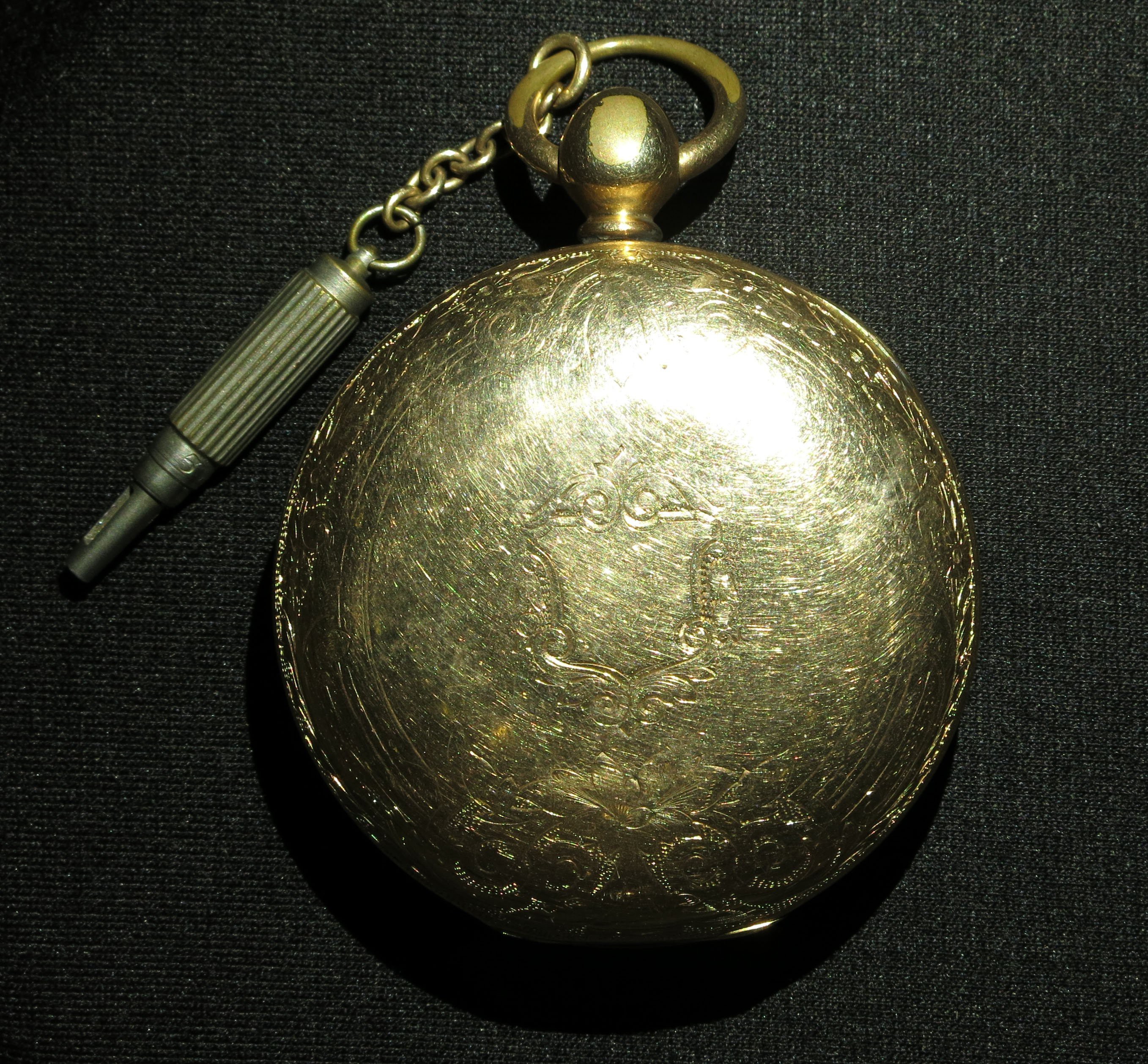 By fitting a light curve to every pixel, RTI essentially "smooths out" high points in the light curve, eliminating reflected highlights. Here's an RTI image, slightly modified using Photoshop to enhance contrast:
By fitting a light curve to every pixel, RTI essentially "smooths out" high points in the light curve, eliminating reflected highlights. Here's an RTI image, slightly modified using Photoshop to enhance contrast: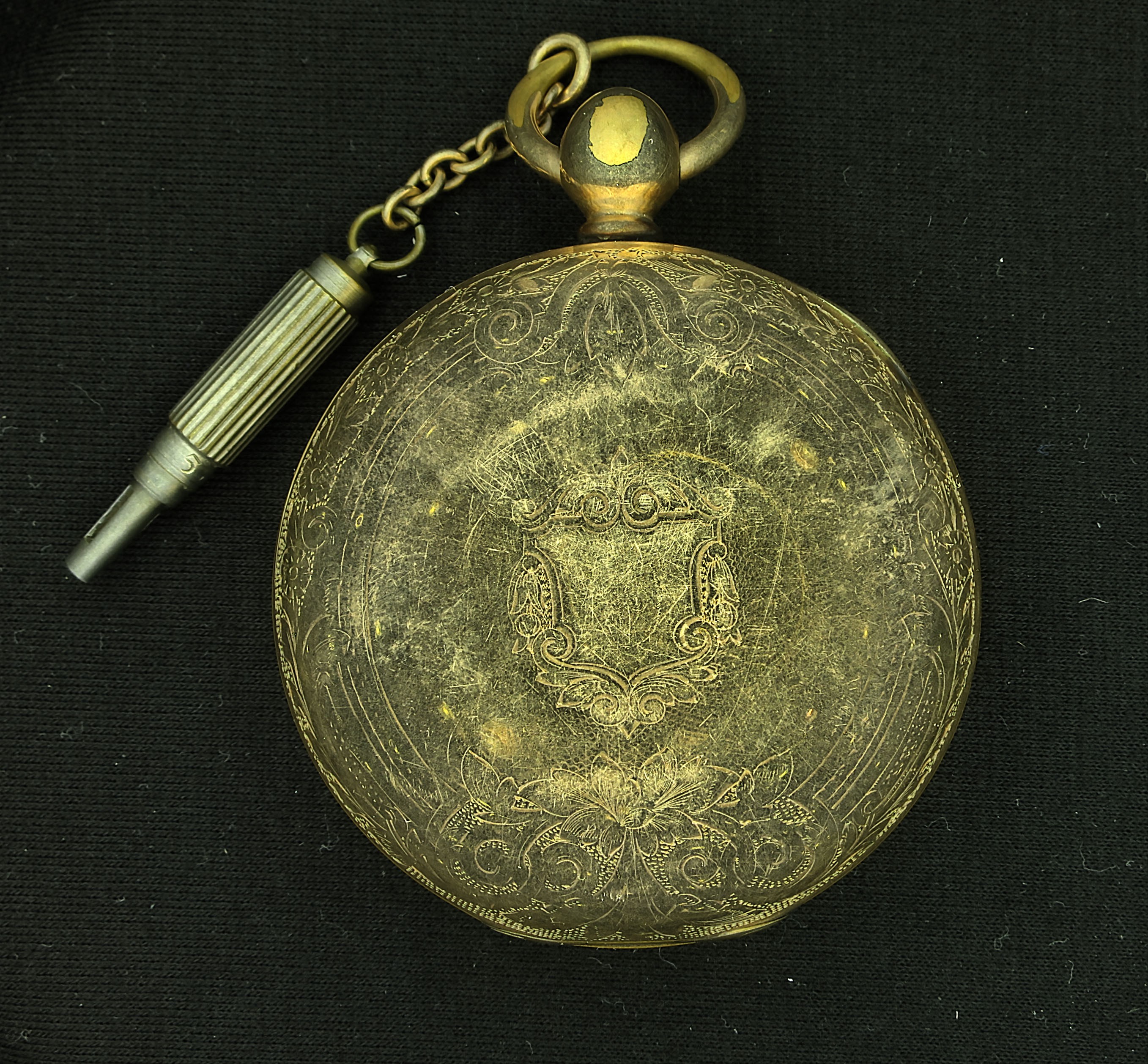 This is with the virtual lighting direction directly overhead; in the RTIViewer software, you can dynamically change the virtual lighting direction to anything you want, revealing additional details.
This is with the virtual lighting direction directly overhead; in the RTIViewer software, you can dynamically change the virtual lighting direction to anything you want, revealing additional details. The first photo in the sequence is at a lighting angle of about 65 degrees:
The first photo in the sequence is at a lighting angle of about 65 degrees: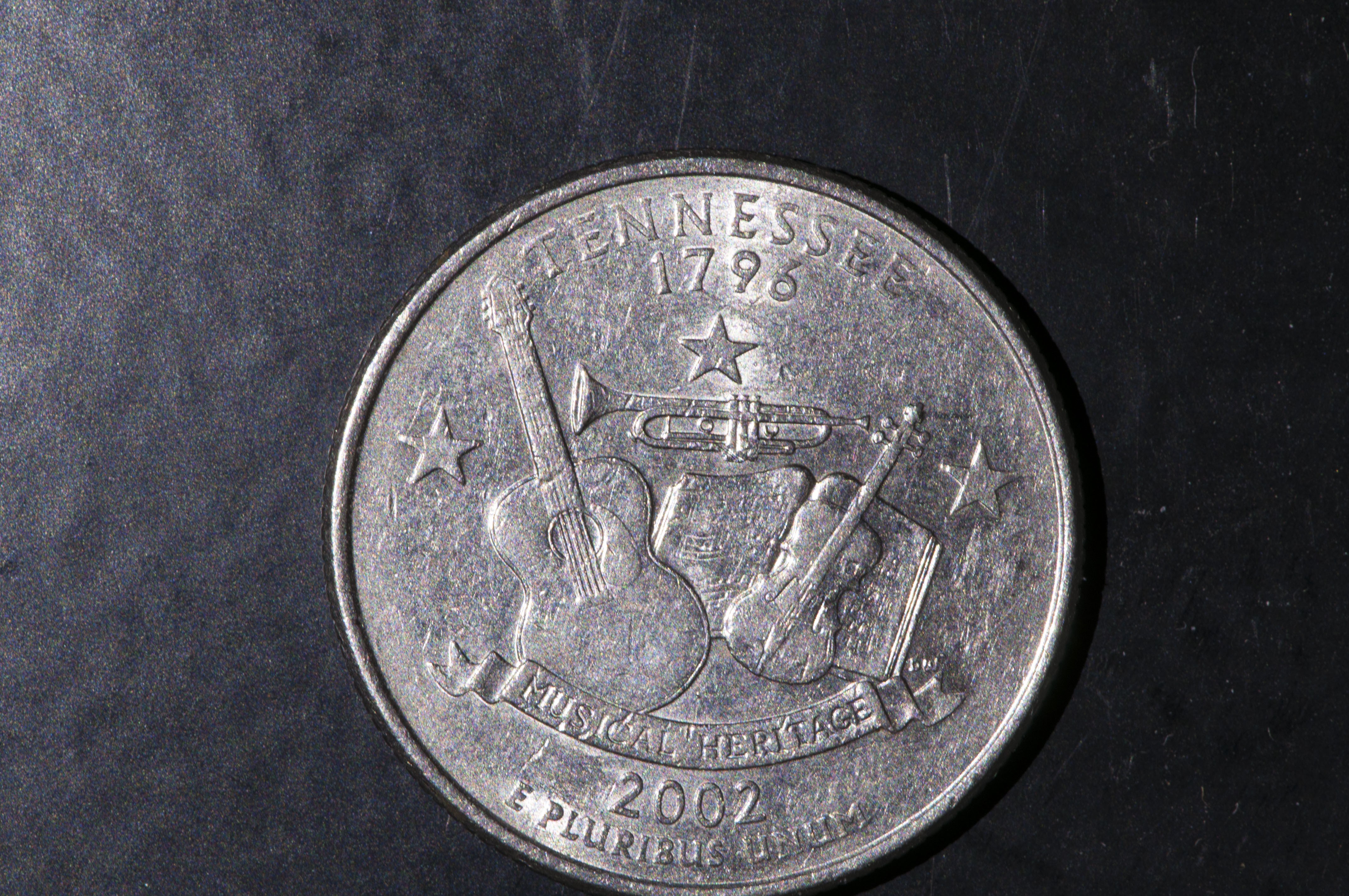 Process all the photos into an RTI dataset, and you can light the coin at an arbitrary oblique angle to bring out more detail, as well as suppressing shiny highlights that obscure details:
Process all the photos into an RTI dataset, and you can light the coin at an arbitrary oblique angle to bring out more detail, as well as suppressing shiny highlights that obscure details: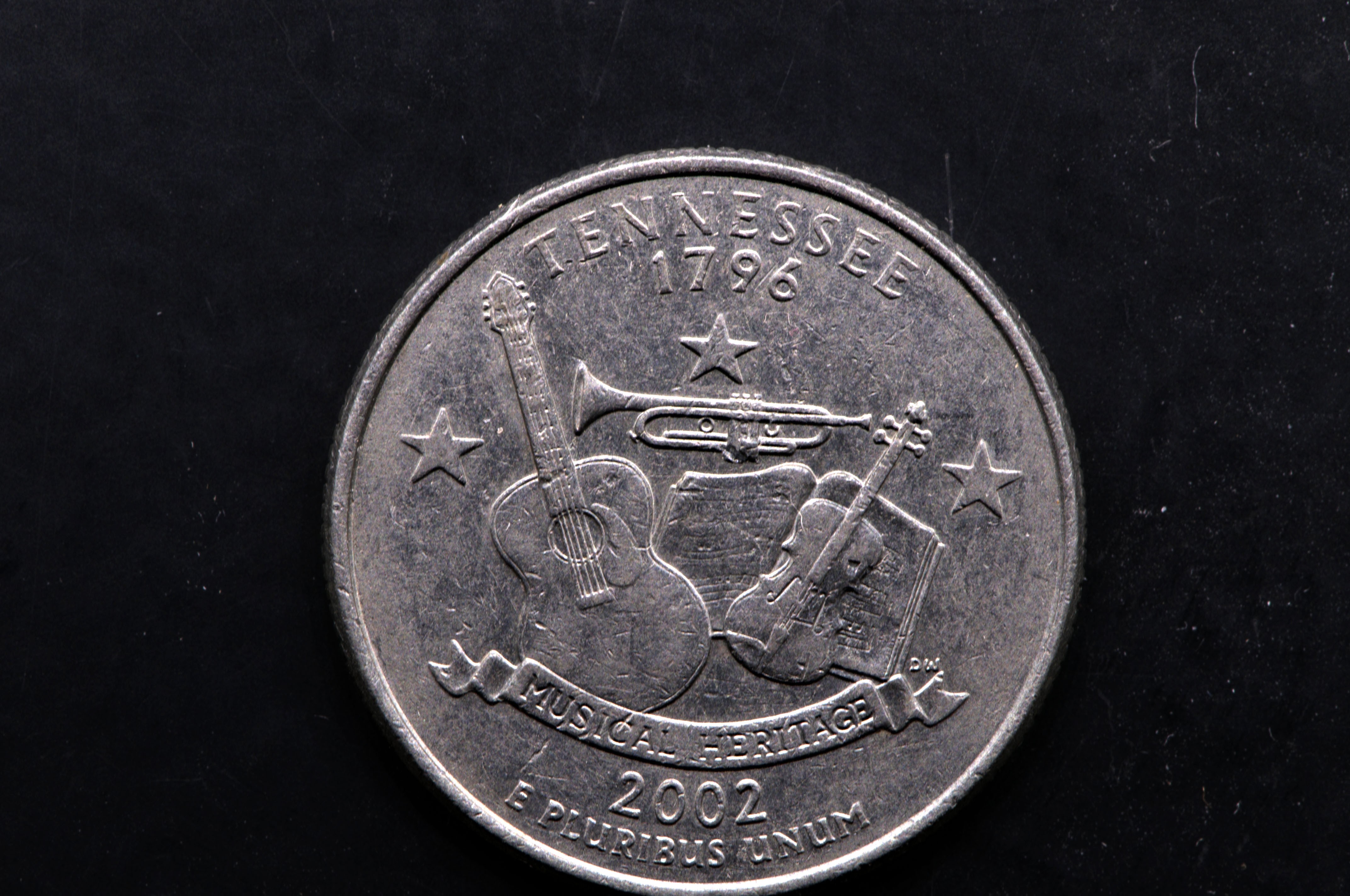 Now use the specular enhancement mode, which imparts a shiny character to the surface, and the details really pop:
Now use the specular enhancement mode, which imparts a shiny character to the surface, and the details really pop: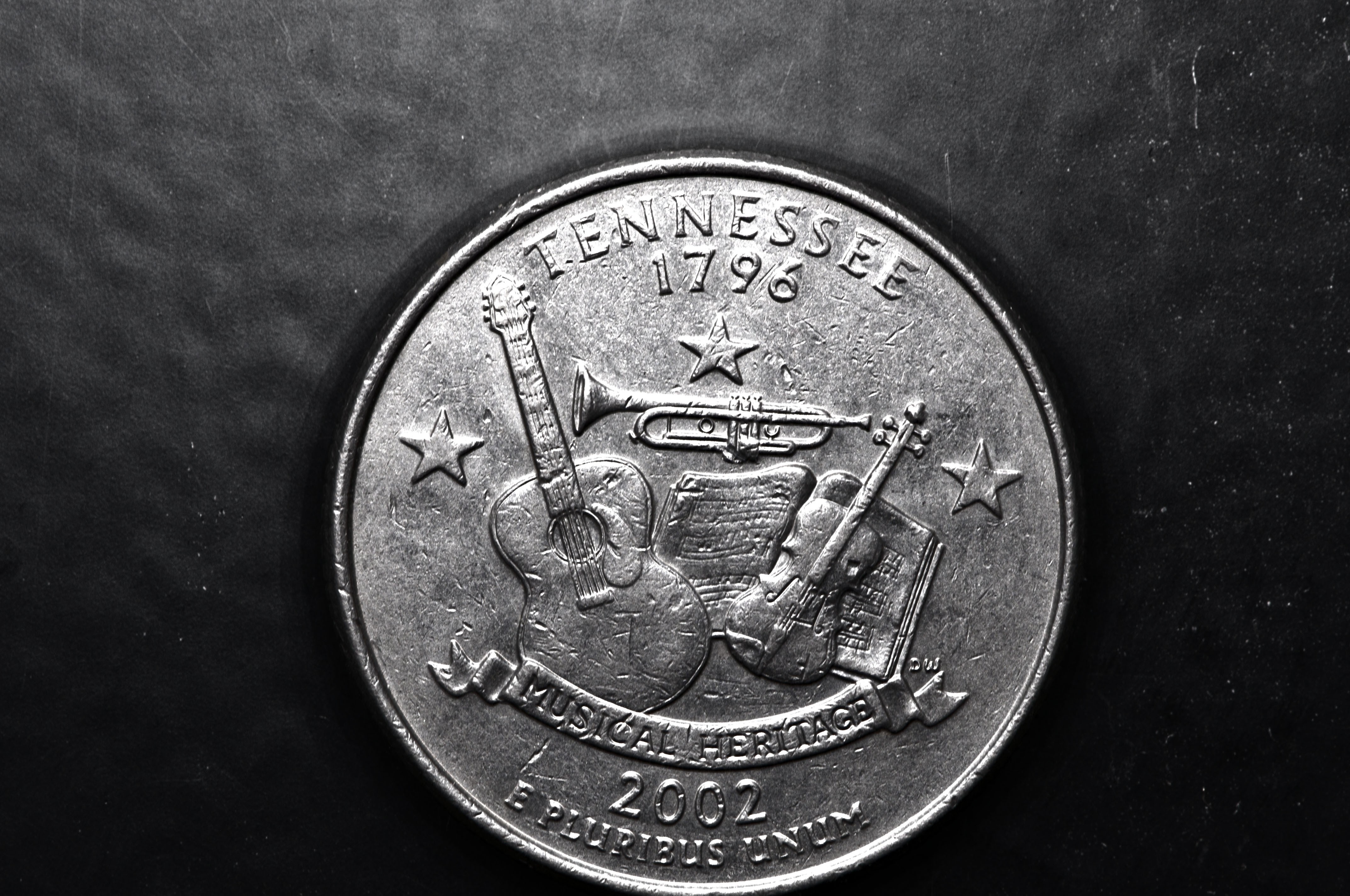 Using the normals enhancement mode, which color-codes the picture based on the perpendicular direction to the surface at all points, brings out a different view:
Using the normals enhancement mode, which color-codes the picture based on the perpendicular direction to the surface at all points, brings out a different view: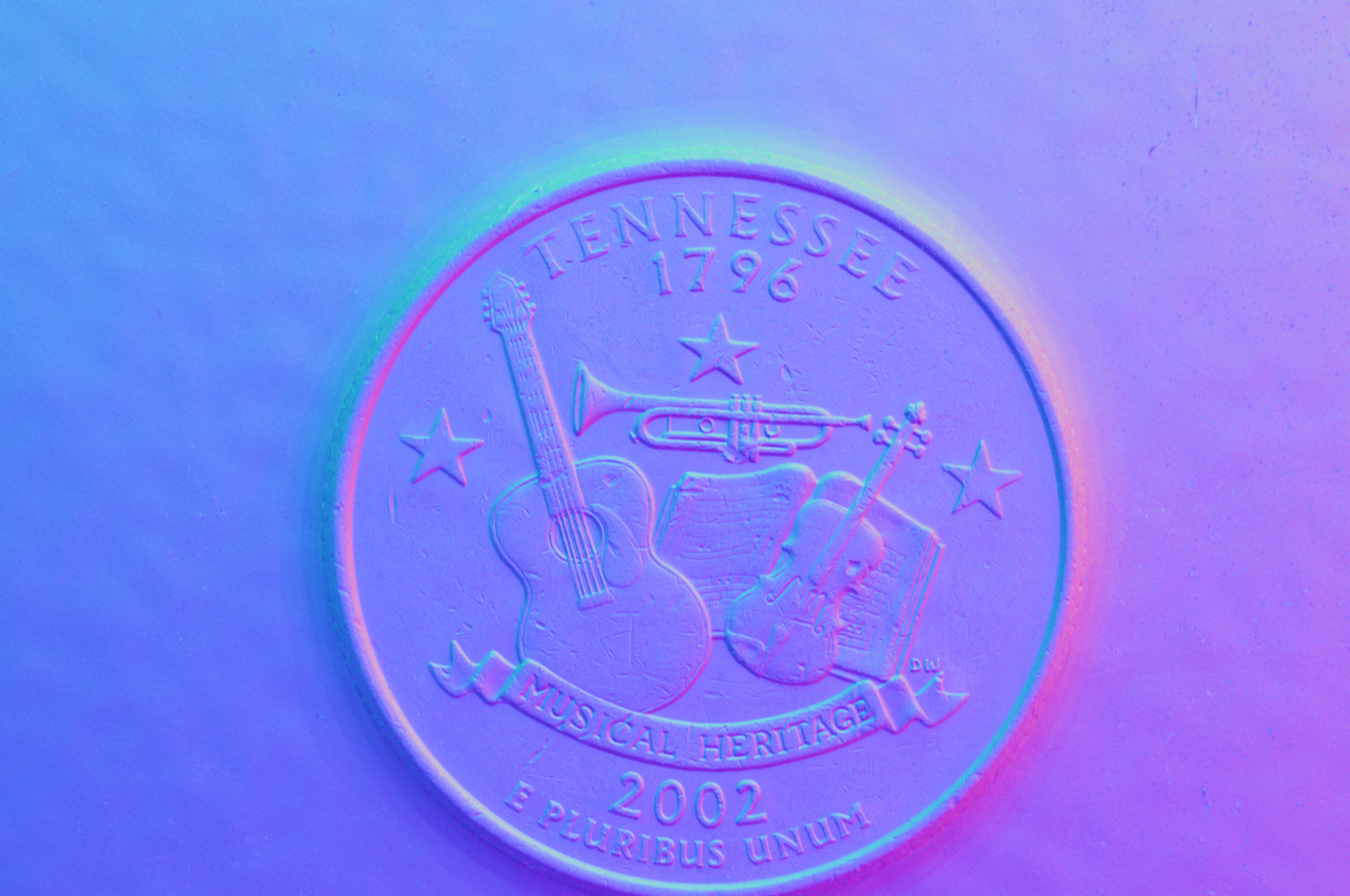 These images don't really do the technique justice, since they are all static captures of a dynamic viewing process; changing the virtual lighting angle dynamically can bring out different details at different lighting angles.
These images don't really do the technique justice, since they are all static captures of a dynamic viewing process; changing the virtual lighting angle dynamically can bring out different details at different lighting angles.